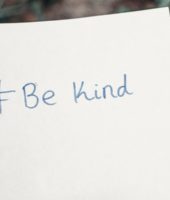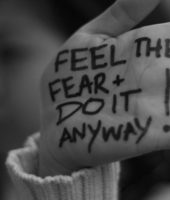Anxiety attacks are terrifying and exhausting. We can only do so much to prevent being in a space that causes them. What happens if we feel the onset of one?
Anxiety Attack or Panic Attack — Which Am I Having?
Although the symptoms between the two are very similar and discussed later in this piece, there are a few key differences between an anxiety attack and a panic attack. Anxiety attacks are provoked; they are reactions to a stressor. Meanwhile, panic attacks can just come whenever they please. Moreover, a person having an anxiety attack may experience great fear or apprehension. In a panic attack, however, the individual is often frozen in these symptoms and is unable to function.
Although these techniques are focused on providing aid during anxiety attacks, they can also be attempted should someone be having a panic attack. The success rates simply may not be as strong.
Signs of an Oncoming Panic Attack
What does an anxiety attack feel like? How do you identify one?
Emotional tells include an overwhelming sense of fear and anxiety. (They are called “anxiety attacks” for a reason.) Often a feeling of being out of control or concern of utter dread looms over you.
There are numerous physiological signs too. Your heart might tighten and feel as if it’s stopped, or it could begin to race or pound out of control. You may feel chills or start to sweat. Trembling, weakness, dizziness, and numb appendages are common too. Breathing issues, chest pains, a stomachache, or nausea can indicate an impending anxiety attack.
Now that we’ve identified what’s going on, how do we manage this crisis? Below are steps on grounding yourself if an anxiety attack is imminent or occurring.
Breathing Techniques
4-7-8 Breathing
One of my favorite techniques is the 4-7-8 Breath, as demonstrated by Dr Weil in this video.
With your mouth closed and breathing through your nose, take in a breath while counting to 4 in your head. Hold that breath to a count of 7. Then exhaust everything in your chest through your mouth for a count of 8. You can even make a wooshing noise as you release the air. All of this is a single breath count.
Try to do this three or four times in a row, while clearing your mind.
3-2-4 Breathing
If 4-7-8 is too difficult of a number set to breathe through, 3-2-4 may be preferred
Again, you breathe in through your nose for the first count — for this technique, that is a count of 3. Then you hold your breath for a count of 2 and exhale forcefully through your mouth for a count of 4.
Breath Counting
To do breath counting, breathe at a relaxed pace, counting a repetition during each exhalation.
As you exhale on your first breath, silently count to 1. On your second exhale, count to 2. On your third, to 3. And so on for 4 and 5.
It is not advised to count beyond 5 in this exercise. Rather, once you reach 5, start over again at 1.
Envision the numbers as you count. This will encourage you to keep your mind off the issue worrying you.
Somatic Techniques
Muscle Relaxation
Similar to how the above breathing exercises allowed you to control your body’s response to stress, muscle relaxation techniques cause your body to release its tension.
Focus on one set of muscles at a time, and just relax them. Start simple, such as with your fingers or toes. Then work down or upward throughout the rest of your body.
If you sense something tightening up again, focus back on it and relax, and then continue on to where you were previously in your body.
Cold Water to the Face
Applying cold water to your face — in your hands, via a rag, with pieces of ice, et cetera — can sometimes startle your system so much that you distract yourself from the perceived threat. Try to cover as much of your face as possible with the water, with the water itself being as cold as you can stand it. Splash yourself in the face a few times, or immerse your face in a bowl of water for 15 seconds once or twice. Your “dive reflex” may kick in — your body is responding to being submerged in freezing cold water by conserving its energy to survive. In said cases, your body sees anxiety as unnecessary and the tension dissipates.
Mental Techniques
Focus Object
The goal is to redirect your focus from the subject inducing anxiety to something more benign. Having a focus object can be a key approach.
Choose a single object in clear sight and focus your entire attention on it. Think about each of your senses — sight, touch, smell, location, et cetera — and try to describe that object to yourself in every capacity.
If your focus object is a pencil, consider how smooth or rough it would be between your fingers. Think about the lead — is it hard or soft? If mechanical, does it click when you extend the lead? Imagine using the object, writing something with the pencil. How would it feel to snap the pencil in half? Imagine using its eraser. And so on.
Again, focus all attention on this one object. If you feel your mind wander, just bring it back to the object of focus.
Happy/Safe Place
Also called your Escape or your Paradise, your Happy or Safe Place is simply a location — real or imagined — that you can clearly envision and use as a space to bring your mind to distract it from your troubling issue on hand.
For many people, it might be the beach or a cabin in the mountains. Personally, I am in the woods with nature and no human interaction. Generally, the location is somewhere quiet, peaceful, calm, and relaxing. Sitting in the traffic of a major city is not typically a Happy Place.
Wherever the location, envision it to the greatest degree of detail possible. Engage every sense you can consider, and focus on them one by one. Get the visual as detailed and specific as you can. Make the place as real as possible. Transmute yourself to your happy place from the current place of tension.
What to Do in Public
The bathroom is your friend. The first thing I do when having an anxiety attack is run to the restroom and wash my face repeatedly. You can then hide in a bathroom stall and practice a breathing technique, muscle relaxation, Escape envisioning, or anything else.
If it occurs while you are driving, which it does for many people, pull over as quickly and as safely as possible. Get out of traffic and into a parking area. Parking far from other vehicles may be beneficial, as it would offer some sense of solitude. Then just engage in the above techniques.
Practice to Prepare
It is advised for you to practice these techniques prior to needing them. Set aside a little time each day to work through one or two of these. Then, when you need them, you will be better able to perform them.
Feel free to tweak or even combine these techniques to any degree that works for you. Just ensure that you are pursuing calmness and tranquility and that you are attempting to let go of the stressors causing the anxiety attack at the time.
Of courses, these are not guaranteed to work for every person nor for every situation. But it is a good place to start when you are panicking and don’t know what else to do.
If you liked this article, check out: http://stories.harnessmagazine.com/7-effective-ways-to-help-students-with-anxiety-in-college/






